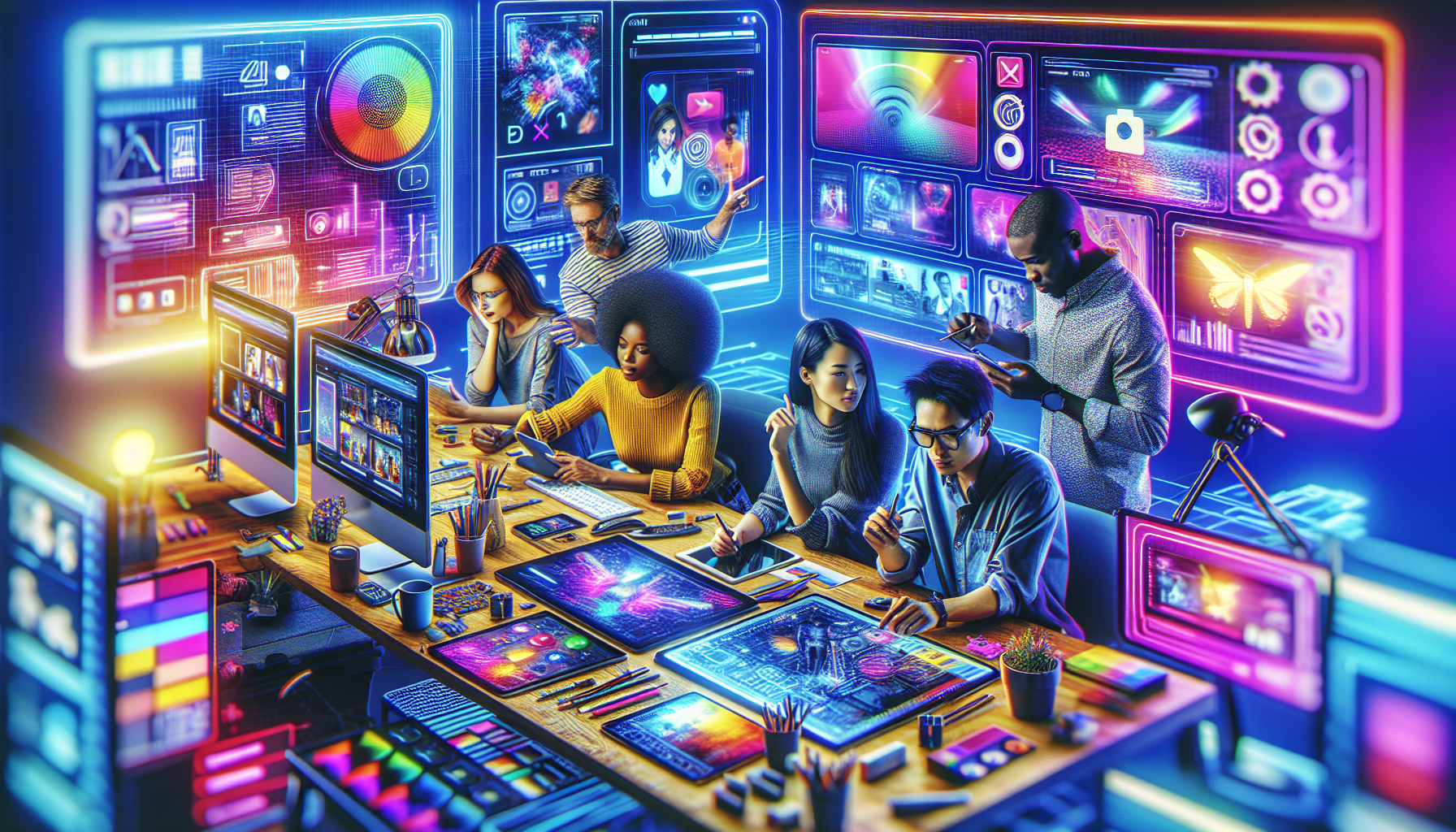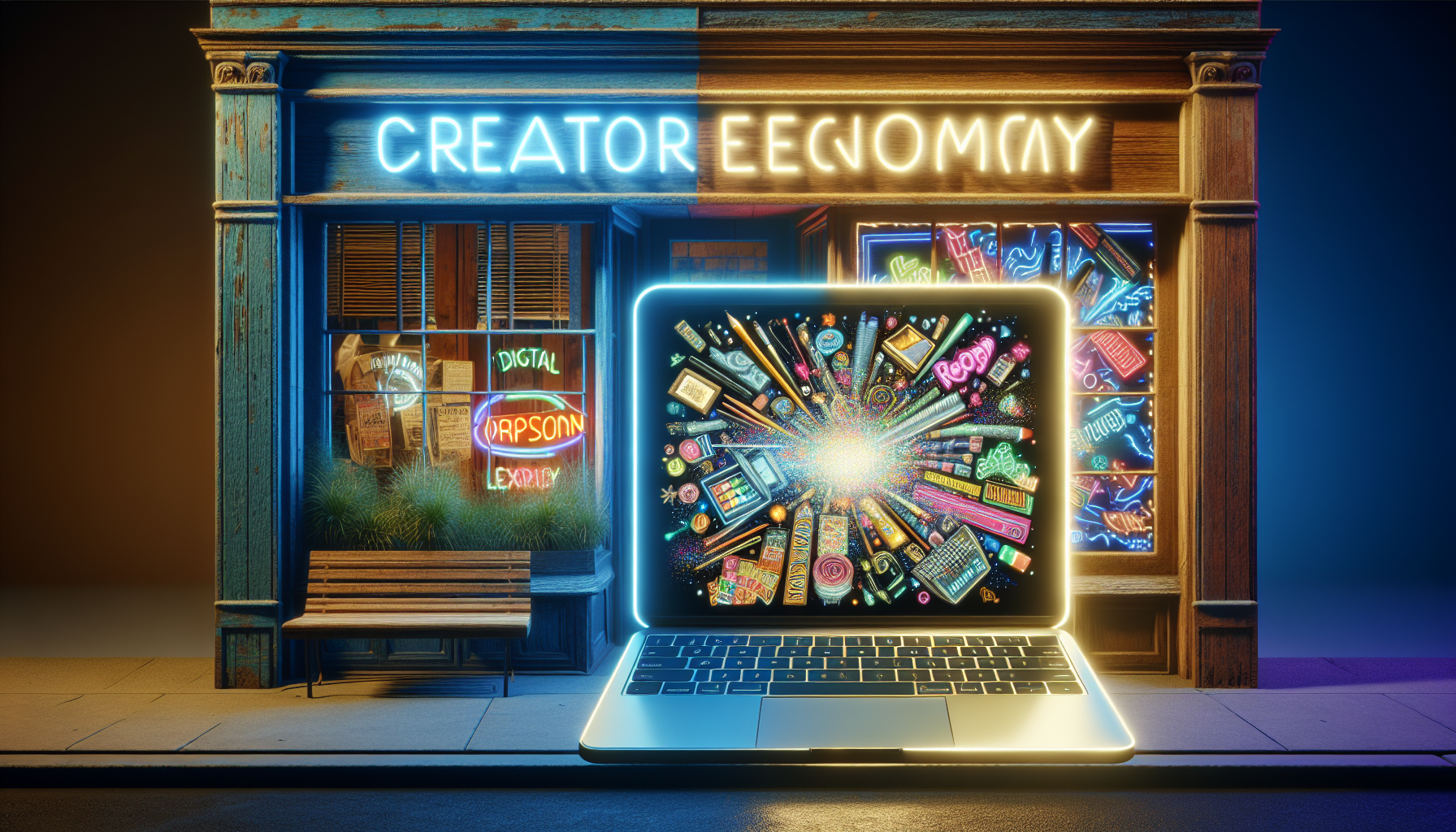
 In the bustling digital landscape of the creator economy, identifying your niche stands as a foundational step for turning a hobby into a viable career. This focus allows creators to build a targeted audience, hold greater influence, and carve out a unique space in the vast online ecosystem.
In the bustling digital landscape of the creator economy, identifying your niche stands as a foundational step for turning a hobby into a viable career. This focus allows creators to build a targeted audience, hold greater influence, and carve out a unique space in the vast online ecosystem.
Understanding the Power of Niche
A well-defined niche not only helps in differentiating a creator from the crowd but also attracts more engaged followers. While many creators start with broad interests, narrowing it down to a specific niche can catalyze growth. For example, within the broader category of fitness, niches like yoga for surfers or bodyweight workouts for busy professionals have surfaced, driven by creators who saw opportunities to cater to specific audiences.
Real-World Examples and Insights
Take YouTube creator, Michelle Phan, whose niche in beauty tutorials helped her rise to fame. By focusing on makeup and skincare, she connected with millions looking for authentic advice in that realm. Similarly, creators on Instagram specializing in plant-based recipes have transformed their hobby of cooking into a career, capitalizing on growing dietary trends.
Tools for Defining Your Niche
Platforms like YouTube and Instagram provide analytics to help creators understand audience demographics, engagement rates, and content performance. Such insights enable creators to refine their niche by focusing on what resonates most with their audience. Additionally, tools like Google Trends can illuminate what potential niche topics are gaining traction online.
Impact on Digital Culture and Income
Niche content creates a sense of community among followers who share specific interests. This bond can lead to higher retention and loyalty, crucial for monetizing content through ads, sponsored posts, or exclusive content on platforms like Patreon and Substack. As creators focus on their niches, they contribute to diversified digital culture, offering unique perspectives and content variety that enrich the online experience.
In essence, identifying your niche isn’t just about narrowing down content; it is a strategic move that defines a creator’s path in the digital world. As the creator economy continues to expand, a well-chosen niche could be the pivotal factor in transforming a hobby into a sustainable and fulfilling career.
Building an online presence
In the thriving creator economy, an impactful online presence acts as the lifeline for transforming a hobby into a career. Crafting an identity in this expansive digital world requires more than just uploading content; it’s about creating a cohesive brand and connecting with your audience.
Crafting Your Digital Identity
Developing a distinctive and authentic digital identity that resonates with your niche is key. Creators like Emma Chamberlain have excelled by showcasing their true selves. Her relatable and quirky persona on YouTube helped her amass a dedicated following, paving the way for lucrative brand partnerships and expansions like her own coffee company.
Leveraging Platforms and Tools
– YouTube: Perfect for long-form content and fostering a personal connection with the audience through vlogs or tutorials.
– Instagram: Ideal for visually-driven niches, Instagram Stories, and Reels offer dynamic ways to engage followers and showcase your brand.
– TikTok: This platform’s algorithm can quickly propel new creators to popularity, especially in niches that align with trending challenges or viral content.
– Patreon: Provides a platform for offering exclusive content to superfans willing to support your work financially.
Utilizing these platforms allows creators to reach a wider audience while tailored analytics help refine strategies.
Building Community and Engagement
A strong online presence thrives on active engagement with your community. This means not just posting regularly, but also interacting with followers through comments, live Q&As, and collaborations with other creators. MKBHD, a prominent tech reviewer on YouTube, often engages his audience by soliciting feedback on upcoming tech trends, integrating viewer interests into his content.
Impact on Digital Culture and Income Generation
Through consistent and meaningful content, creators contribute to the richness of digital culture by offering varied voices and perspectives. This presence not only builds an engaged audience but also enhances monetization opportunities through ad revenue, sponsored content, and merchandise sales.
In establishing a robust online presence, creators transition beyond mere hobbyists into influential figures within the dynamic creator economy. It empowers them to transform their passions into sustainable, income-generating careers that actively shape digital landscapes.
Monetizing your content
In the vibrant creator economy, monetizing content effectively distinguishes hobbyists from career creators. This transformative process equips aspiring creators with the financial backbone needed to sustain their creative passions.
Diverse Monetization Strategies
Diving into content monetization involves exploring various revenue streams to find what aligns best with a creator’s audience and niche. For instance:
– Ad Revenue: Platforms like YouTube enable creators to earn through ads placed on their videos. This model suits those with expansive viewer bases, as ad earnings scale with view counts.
– Brand Partnerships: Affiliate marketing and sponsorship deals are lucrative, especially for creators on Instagram and TikTok. Influencers like Zoella have leveraged their following to become synonymous with certain brands, transforming simple hobby content into credible, monetizable advice.
– Subscription Services: Patreon and Substack are pivotal for creators offering exclusive content to devoted fans, such as behind-the-scenes access, early releases, or premium newsletters.
Tools and Platforms Facilitating Monetization
Creators must utilize platforms that streamline engagement and monetization:
– YouTube Analytics: Offers insights into viewer demographics and preferences, guiding creators in optimizing content for maximum impact.
– Instagram Shop: Facilitates direct product sales on the platform, ideal for creators with physical merchandise.
– Podia: A versatile platform supporting course creators in hosting and selling premium courses, ideal for educators and creatives looking to monetize specialized knowledge.
Impact on Digital Culture and Income Generation
Monetization reshapes how creators contribute to digital culture, enabling them to produce high-quality content continuously. This financial support cultivates innovation and diversity, enriching the digital landscape. Moreover, as creators diversify their income sources, they gain financial independence, transforming their hobbies into robust careers.
By smartly leveraging these monetization avenues, creators in the digital economy carve out sustainable paths that go beyond passion, fostering dynamic, financially viable ventures that resonate on a global scale. With the right blend of strategy and creativity, hobbyists can effectively transition into thriving figures within the ever-evolving creator landscape.
Managing financial sustainability
In the bustling creator economy, managing financial sustainability is a pivotal step for those transitioning from hobbyists to full-time creators. As creators move beyond merely monetizing their content, establishing a financial foundation that ensures longevity and growth becomes essential.
Diversifying Income Streams
To manage financial sustainability effectively, creators must diversify their income sources. Relying solely on one platform or revenue stream can be risky. For instance:
– Ad Revenue and Sponsorships: While ad revenue from platforms like YouTube and TikTok provides a steady income, securing multiple sponsorships across different niches safeguards against fluctuations in viewership.
– Merchandise and Products: Creators like PewDiePie have launched successful merchandise lines, creating an independent revenue source separate from their digital platforms.
– Exclusive Content Subscriptions: Offering premium content via Patreon or Substack allows creators to earn a predictable monthly income directly from their most loyal fans.
Effective Financial Planning
Proper financial management is crucial for creators wishing to transition their hobby into a sustainable career. Tools such as QuickBooks or Mint can help in budgeting and tracking income and expenses. Setting aside a percentage of earnings for savings and investments ensures a financial buffer during periods of fluctuating income.
Building a Support Network
Collaborating with financial advisors or accountants familiar with the creator economy can provide invaluable guidance. Engaging with online communities or mastermind groups of fellow creators also offers shared insights and strategies for financial growth.
Exploring New Opportunities
Being open to emerging platforms and trends can unlock new avenues for revenue generation. Pioneering creators who were early adopters of platforms like TikTok and Clubhouse have managed to capture significant market share, setting a precedent for future digital entrepreneurs.
Impact on Digital Culture and Income Generation
As creators establish financial sustainability, they contribute to a more resilient digital culture. Encouraged by a stable income, creators can focus on producing high-quality, innovative content, further enriching the online landscape. This independence not only empowers individual creators to pursue their passions but also inspires new entrants into the creator economy.
By managing financial sustainability wisely, creators can transform their hobbies into prosperous careers, contributing to a dynamic and ever-evolving ecosystem that supports digital expression and entrepreneurship.
Maintaining creative inspiration
For those navigating from a hobbyist to a career within the creator economy, maintaining creative inspiration is as crucial as any technical or financial skill. This boundless well of passion fuels longevity, helping avoid burnout while continuously engaging an audience hungry for fresh, innovative content.
Finding Inspiration in Everyday Life
Creators often draw inspiration from their surroundings and everyday experiences. Real-life events, personal challenges, or routine activities can spark new ideas or perspectives that resonate with a broad audience. Consider video content creator Casey Neistat, who transformed his daily life into captivating vlogs that engage millions. By keeping an eye open for unique angles on ordinary subjects, creators can maintain a prolific output that keeps their work vibrant and relatable.
Connecting with Other Creators
Networking and collaborating with peers in the creator economy offer fresh inspiration and learning opportunities. Joint ventures with other creators, whether through co-hosted events or collaborative projects, introduce different styles and ideas, invigorating one’s creative output. Platforms like Instagram and TikTok are perfect arenas for such initiatives, where creators often challenge each other to partake in trending challenges or collaborative storytelling.
Embracing New Challenges
Trying new formats or exploring unfamiliar subjects can reignite passion and creativity. Platforms like YouTube offer endless possibilities—from short sketches to documentary-style storytelling—that allow creators to experiment outside their usual content boundaries. Embracing failure as a learning process is key here; not every venture will succeed, but each attempt adds to the creator’s skill set and depth of creativity.
Tools to Foster Creativity
Leveraging tools designed for creative stimulation can keep ideas flowing. Pinterest, for example, acts as a visual discovery engine where creators can find inspiration boards on virtually any topic. Mind-mapping software and creativity apps like Trello or Todoist help organize brainstorms, capturing fleeting thoughts before they slip away and structuring them into coherent content plans.
By sustaining creative inspiration, creators not only rejuvenate their passion but also foster a dynamic career within the ever-evolving creator economy. As they continue to refresh their approach and challenge themselves creatively, they contribute to a diverse and vibrant digital culture, ensuring their transformation from hobbyists to influential figures remains an exciting and fulfilling journey.

